Half of this Australian wine sold in just one hour
‘As soon as I tasted the first drop, I realised...’: Powerful francophiles seal a deal to export our finest chardonnay worldwide.
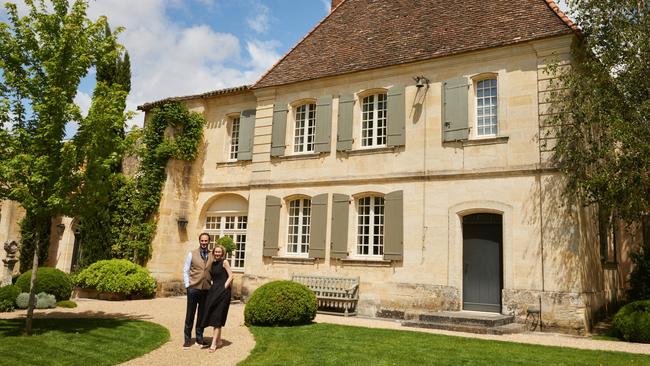
In the rarefied world of Bordeaux fine wine understatement is prized, although a select few – such as Edouard and Kelley Moueix – manage to combine that with polish and panache.
As the owners of Château Bélair-Monange, their existence is yes, rarefied and yet beautifully earthy. Their estate occupies literally the highest point of the limestone plateau of Saint-Émilion. Their elegant château, which dates back to the 15th century, commands superb views of the most beautiful region in Bordeaux.
Nearby is Bélair-Monange’s remarkable new winery, designed by the Pritzker Prize-winning duo of Jacques Herzog and Pierre de Meuron, and located above the lovingly cultivated slopes below.
“Not a bad view, eh?” smiles Edouard Moueix, as he and wife Kelley pose beside Cheval Major, a marvellous rotating cubist statue by Raymond Duchamp-Villon.

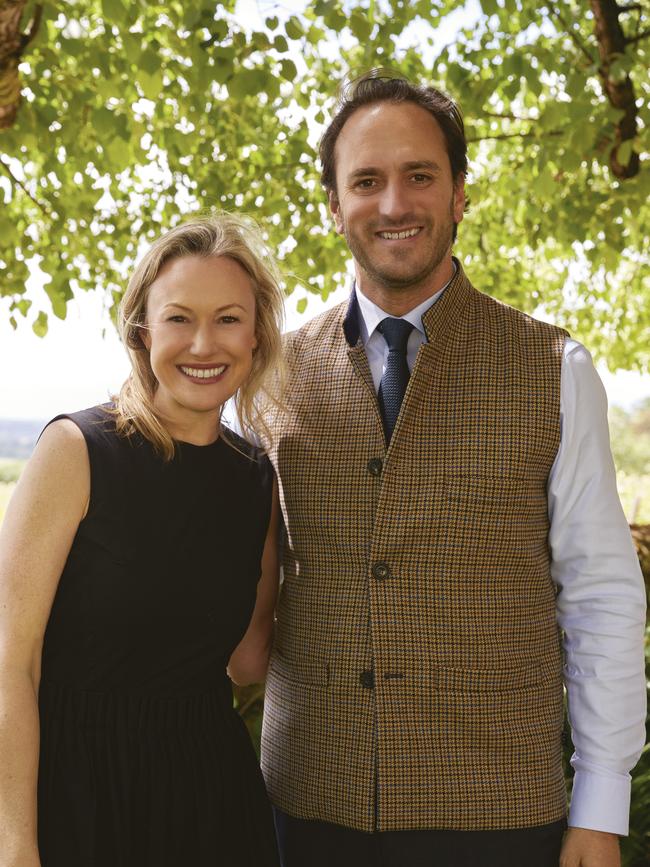
The winery is a boldly modernist statement amid a region ripe with ancient history. Vines were reportedly first introduced here in the first century, and its finest wines were enjoyed by Roman emperors. Saint-Émilion is named after a wandering Breton monk who carved a hermitage inside a limestone cavern in the eighth century. His successors planted vineyards and the reputation of the local wines grew in the Middle Ages, with Saint-Émilion on the pilgrim route to Santiago de Compostela in Galicia, Spain. It’s a unique area of Romanesque churches, scores of chateaux, tiny winding roads and a patchwork quilt of finely manicured rolling green vineyards. UNESCO designated it a World Heritage site in 1989.
The Moueix estate dates back to 1688 and has been owned by just four families in that time. The Moueix family acquired what was then known as Château Bélair in 2008, merged it with their adjacent Château Magdelaine and in 2012 renamed it Bélair-Monange, after Edouard’s great grandmother. Both Bélair and Magdelaine were already rated among the 12 premier grands crus of Saint-Émilion in the famed 1955 classification.
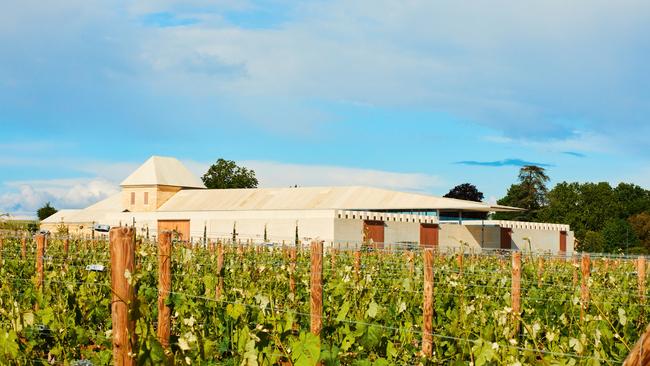
However, in a region noted for long-time owners, such as the Hessel family – in residence since 1390 at nearby Château des Annereaux – the Moueix clan, by contrast, are relative newcomers. Great-grandmother Monage first moved south from the modest region of the Corrèze in 1930, with just “a bicycle and a basket”, as the locals like to say. But her son Jean-Pierre went on to become a négociant propriétaire, or wine merchant and estate owner, and arguably the most important of his era, acquiring first one, then two and finally more than 20 châteaux. The most famous of these is Pétrus, the greatest wine of the adjacent region of Pomerol, which was served at Queen Elizabeth II’s wedding in 1947.
Jean-Pierre was famous for saying that Pétrus is best enjoyed with poulet rôti et pommes de terre (roast chicken and potatoes). And his grandson Edouard, built like a rugby forward and fan of local team Bordeaux-Begles, agrees in a way. “I don’t consider wine to be a luxury product. It’s a product of nature that brings people together.”
In a very real sense, prior to Jean-Pierre Moueix, Bordeaux meant the wines of the Left Bank – or south of the Garonne river – such as the Medoc’s Margaux, Pauillac and Saint-Estèphe, primarily made of cabernet sauvignon. After him serious connoisseurs began to appreciate the Right Bank wines of Saint-Émilion and Pomerol, made essentially of merlot.
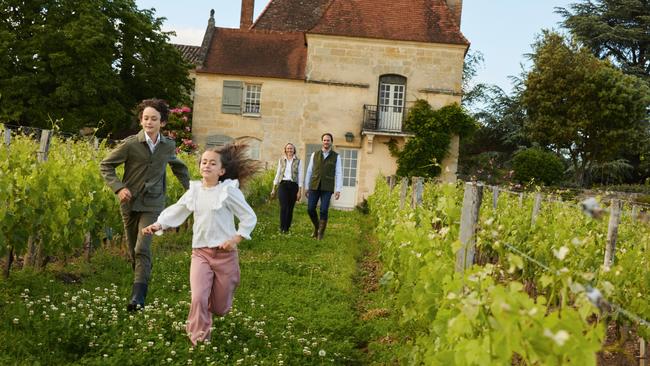
Edouard’s entrepreneurial grandfather Jean-Pierre exported on a large scale to the United States. He also revolutionised wine-making, reducing yields to improve ripening and quality, and his innovative techniques are in evidence as we tour Bélair-Monange with Kelley Moueix.
Bélair-Monange has a full-time staff of 60, and each day a small platoon prunes away excess stems and leaves, ensuring sunshine falls evenly on the vines. These cling to a few centimetres of topsoil above the limestone bedrock, a vital element in this wine’s terroir. This key French term denotes an ideal meeting of soil, micro-climate, inclination and aspect. Each meticulously manicured pied, or vine, provides about one bottle.
“The story of Saint-Émilion is three dimensional. There are the great châteaux, le terroir, and this honeycombed plateau,” explains Kelley, leading us into a huge series of underground caverns and roadways beneath Bélair-Monange that thread all the way down to the township of Saint-Émilion.
Some local landlords quarried so much limestone to build the honey-coloured village that fields literally began to collapse. Indeed, some of the more undulating parcels at Bélair-Monange have been shored up underground by concrete. But the key construction work on their estate is the remarkable chais, or cellars, by architectural greats and longtime family friends Jacques Herzog and Pierre de Meuron. The family’s link to the esteemed architectural firm of Herzog & de Meuron goes back more than 25 years, ever since the Swiss duo designed the winery for Dominus, the outstanding California vineyard of Edouard’s father Christian.
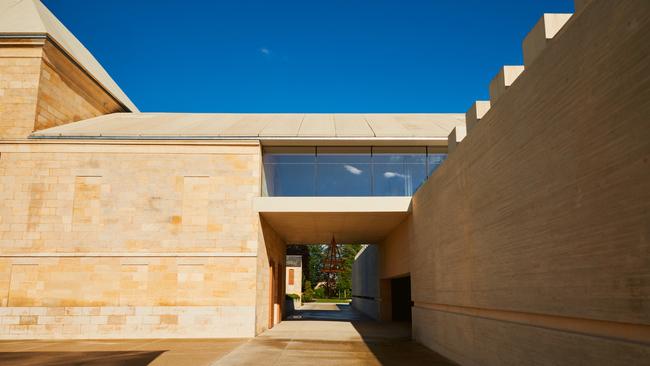
After studying viticulture in California, Christian Moueix created an exceptional vineyard at Yountville (the settlement is named after George Yount, the man
believed to have planted the first grapes in the Napa Valley). The result is the famed cabernet sauvignon estate of Dominus, where the dynamic architectural duo revolutionised vineyard architecture with a façade composed of stacked gabions, or galvanised steel baskets filled with local basalt in shades ranging from dark green to black. As a result the estate blends into the Napa countryside, earning it the nickname, “the stealth winery”.
“Pierre and Jacques are like old family friends. We never dreamed of working with anyone else here at Bélair-Monange,” says Edouard Moueix of their new winery, completed with a premier vinification in September 2022. At which point Pierre and Jacques joined Edouard as members of the Jurade, the local honorary guild dedicated to the protection and promotion of Saint-Émilion wines and famed for its banquets and induction ceremonies where only wines from the appellation are served.
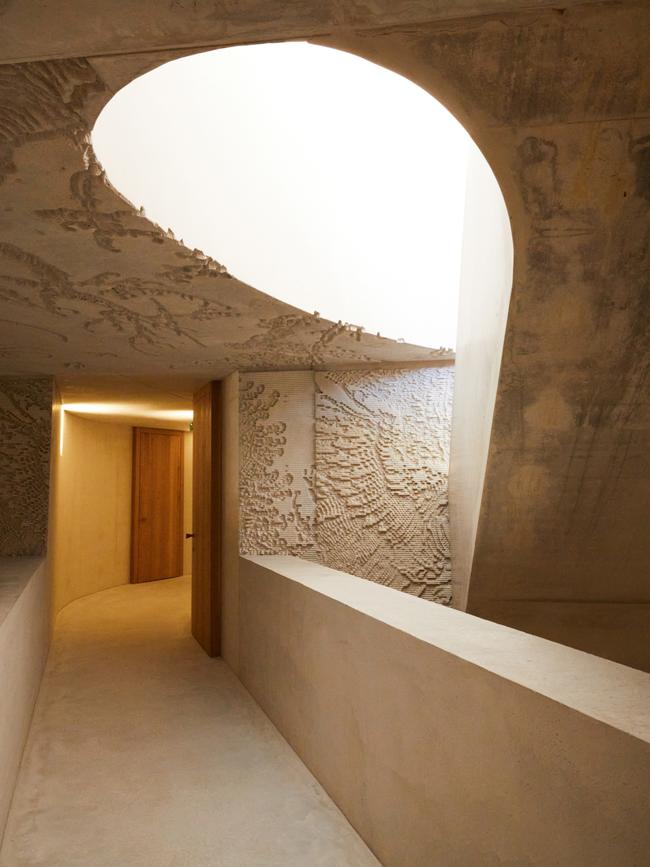
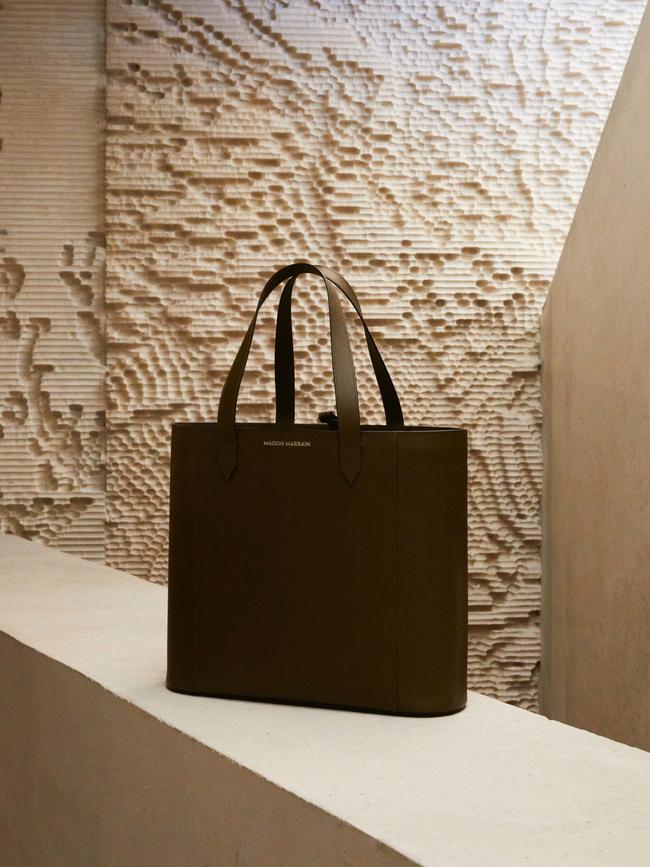
Splendidly, the new winery’s concrete roof mimics the furrows carved 50 centimetres into the limestone in which vines are planted, while its main corridor references Saint-Émilion’s Eglise Monolithe, an ancient church chiselled beneath the historic centre of the town. On the new building’s walls are etched images from Albrecht Dürer’s famous woodcarving Joachim and the Angel, and a representation of the same image is also used in Belair-Monange’s highly distinctive label. A tasting room boasts a refined suite of 10 screenprints by Josef Albers.
In a cunning sleight of hand, Herzog & de Meuron extended the roof out over the winery’s southern terrace, framing the verdant panorama of sunlit vineyards, dotted with green oaks and parasol pines. It is at this point where one stands and exclaims, “This is oenological paradise”.
Almost inevitably, Kelley met Edouard in a vineyard, back in 2007 at Château La Fleur-Pétrus, another Moueix family estate that ranks among the pantheon of wines. When they married in the Marais district in Paris, they celebrated by sailing all their guests down the Seine to a banquet held below Pont Alexandre III. “The repas [meal] was quite classical, though the wines were truly extraordinary,” recalls one old friend.
Life at Château Bélair-Monange follows a tempo set by nature, expressed in their guide to the 2023 vintages: first bud break March 29, flowering May 23, beginning or ripening July 25, harvest for 18 days starting September 11.
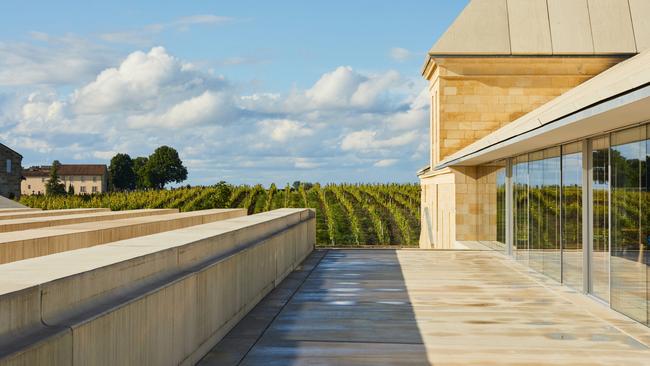
We meet during En Primeur, the intensely busy annual season when agents, shippers and private clients scour Bordeaux to taste the previous year’s harvest. While expensive, the prices for Bélair-Monange are certainly not outlandish. A bottle of 2023 – rated by James Suckling, the famed critic whose rating can be make or break to a wine, with scores of between 97 and 98 – can be acquired for about €100 ($162); a 2015 bottle for €180.
“To be honest, I once swore I would never go into the family business. But in the end the lure of wine proved too strong,” smiles Edouard Moueix over lunch in the château. First a 2016 Bélair-Monange, ripe, sinewy and even spicy. Then a La Fleur-Pétrus 2010, silky and graceful. Both ideal with our ballotine of guinea fowl.
Grandfather Jean-Pierre Moueix was also a shrewd collector of great modern art, acquiring important work by Utrillo, Monet, Raoul Dufy, La Fresnaye, de Staël, Rothko and Gerhard Richter. Arguably his most famous possession was a triptych Francis Bacon painted of Jean-Pierre himself back in 1976 that today hangs inside Edouard and Kelley’s château, along with works by Jean Dubuffet and Oskar Kokoschka.
As growers, the family owns a total of 10 estates in Pomerol and Saint-Émilion. As shippers, their Établissements Jean-Pierre Moueix on the banks of the Dordogne River in Libourne has labyrinthine warehouses, containing hundreds of thousands of bottles of the finest wines.

Post-lunch, a rare treat: an actual En Primeur tasting at neighbouring Château Ausone, which is named, legend has it, after Ausonius, a poet and fourth-century governor of the region. We try half a dozen young wines, before finishing with a bottle of Ausone’s special velvety finesse. “Being a negotiant [wholesaler] helps keep us really grounded. We see how people love to boast and talk up their own wine. Which helps keep us honest about our own wines,” notes Moueix, lowering his left eye for emphasis.
Kelley Moueix came from a decidedly Francophile American family. After stints working in New York, she ended up as an executive at L’Oréal in Paris, helping to direct Giorgio Armani and Lancôme perfumes.
Just north of here on a winding narrow road is Château Canon, an estate acquired by the Wertheimer family – the owners of Chanel - in 1996. And Kelley herself has never lost her luxury links, launching her own accessory business, Maison Marrain, in 2022. Think American practicality meets French polish. Its key product is a great series of handmade totes in smooth Italian leather and coated canvas, with a neoprene lining. The Bon Vivant tote ingeniously can fit two magnums, along with a zippered pouch for a laptop. Sturdy, water-resistant and the perfect way to carry precious cargo, Bordeaux style.
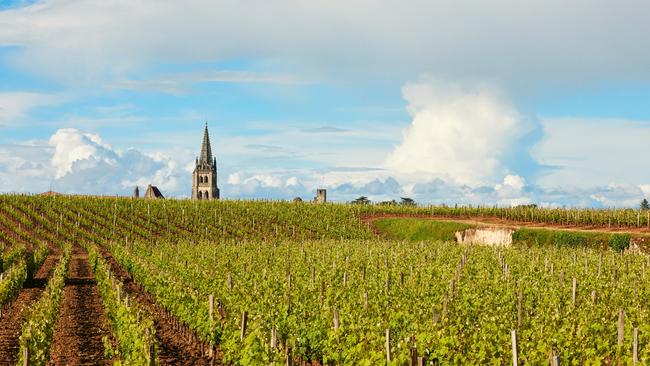
The couple remains very rooted to the region, with their two children attending local schools, and their holiday home at nearby Pyla sur mer – France’s answer to The Hamptons – on the Atlantic coast. It’s a beautiful place of pine trees, Europe’s largest sand dunes at Pilat, surfing beaches dotted with outdoor seafood restaurants and fishermen’s cottages.
Last year, however, they did roam further afield to Australia, meeting with old friend Rick Kinzbrunner, who trained with the Moueix family at Saint-Émilion before returning home to Australia to establish his own vineyard, Giaconda.
“We loved visiting Australia. The mood, the people. Above all, the joie de vivre. And Giaconda, what a wine!” chimes in Kelley. In just four days they sealed a deal to export half the annual production of Giaconda chardonnay worldwide.
“That first 50 per cent sold out in one hour! As soon as I tasted the first drop of Gioconda, I realised that it was a wine to rank with the great Puligny-[Montrachets] or Chassagne Montrachets of Burgundy, so I think we will do quite well,” chuckles Edouard with classic Gallic understatement.

This story is from the July issue of WISH.




To join the conversation, please log in. Don't have an account? Register
Join the conversation, you are commenting as Logout